What Does AM and PM stand for?
Easy definitions for A.M. and P.M. and the story behind how we tell time today

Author
Tess Loucka
Published:
March 2025
Key takeaways
- • AM stands for ante meridiem and PM stands for post meridiem
- • AM and PM both refer to a 12-hour period of each day. AM refers to the first 12-hour period while PM refers to the second
- • Twelve-hour time uses AM and PM to distinguish between the first half of the day and the second half. Meanwhile, 24-hour time does not require distinguishing markers because hour numbers are not repeated.
Since Mesopotamia and ancient Egypt were flourishing civilizations, the 12-hour clock has been in use. Initially, the first half of the day was tracked using the sun’s cycle while the second half was tracked using the moon’s cycle.
Over time, these two cycles developed into what we refer to as a.m. and p.m. — the two terms that keep us on track and on time every day.
Understanding how a.m. and p.m. work is the key to being able to tell time and do it confidently, but what does am and pm stand for?
AM and PM Meaning
The abbreviations a.m. and p.m., sometimes written as AM and PM, are used to differentiate times in the first half of the day from times in the second half of the day.
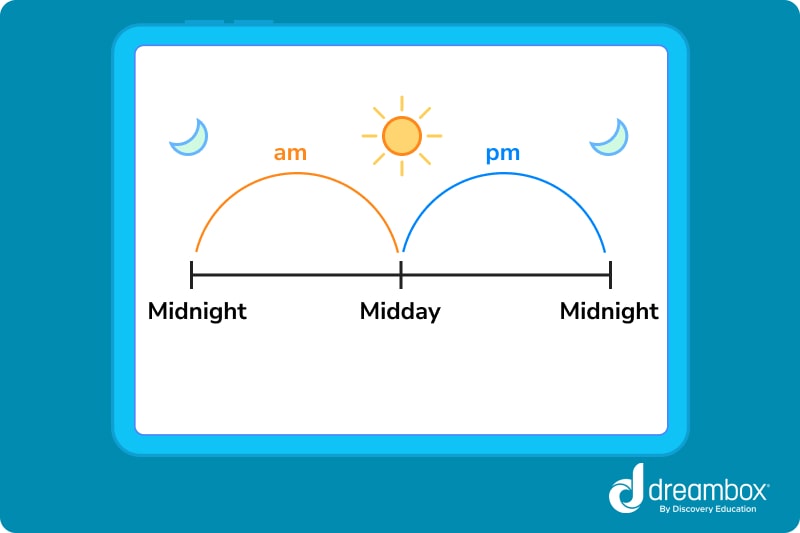
As you can see, the am meaning and pm meaning refer to different parts of the day.
AM Meaning
So what does am stand for? The term a.m. stands for “ante meridiem” which is Latin for before midday.
PM Meaning
What does pm stand for? The term p.m. stands for “post meridiem,” meaning after midday. Pretty straightforward, right?
At this point, you may be wondering, “What time is midday?” Worldwide, midday is 12:00. In the USA, we refer to midday as “noon” and write it as 12:00 PM. If you use the 24-hour clock, drop PM when writing the time. Midday is when the sun is at the highest point in the sky.
AM vs. PM
Both a.m. and p.m. refer to a 12-hour period. The first 12-hour period lasts from midnight to midday or noon. That’s 12:00 a.m. to 11:59 a.m. The second 12-hour period lasts from midday to midnight. That would be 12:00 p.m. to 11:59 p.m.
Table of contents
Get more practice with time and math with DreamBox!
Turn math into playtime with DreamBox Math
DREAMBOX MATH
Get started for FREE today!

AM, PM and Military Time
Since the purpose of using a.m. and p.m. is to differentiate between the first half of the day and the second half on 12-hour clocks, there is no need for them when using a 24-hour clock.
12-Hour Clock vs 24 Hour-Clock
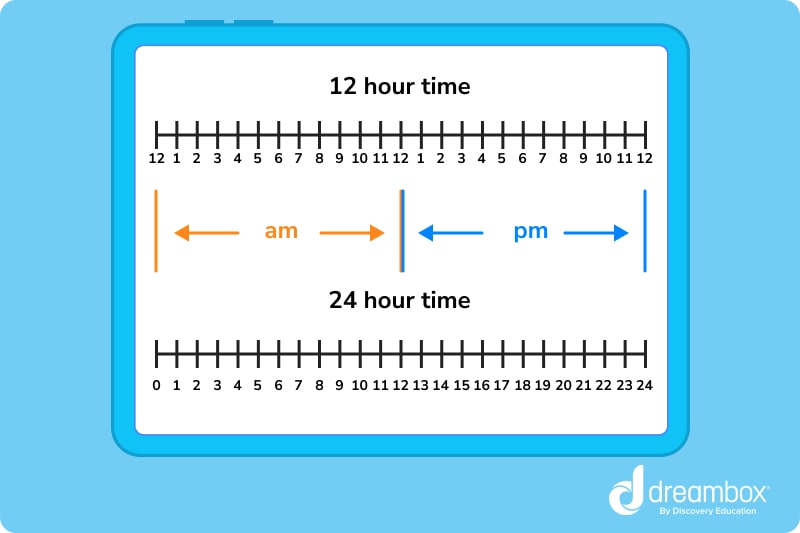
12-hour clocks repeat hour numbers while 24-hour clocks don’t.
24-hour time is the default for time-keeping in most countries.
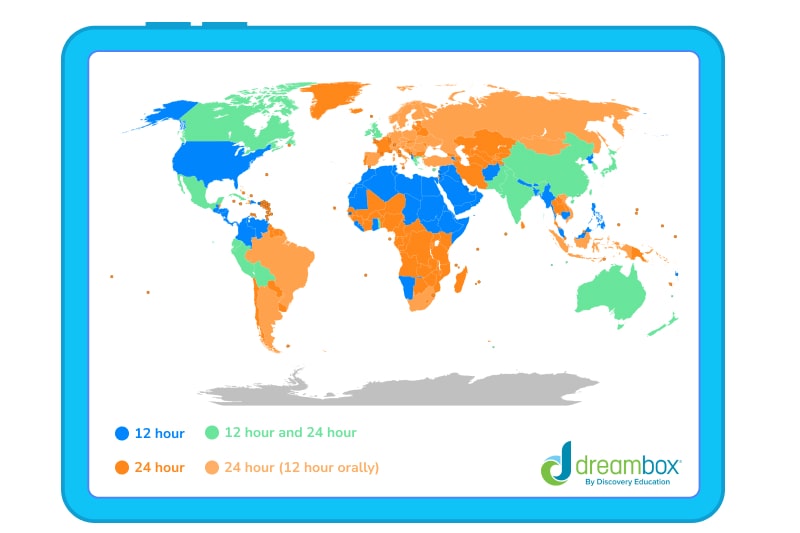
But why do some countries use a 12-hour clock while others use a 24-hour clock?
In 1876, Sir Sandford Fleming, a railway engineer and inventor, missed his train while traveling in Ireland because a misprint on his ticket said p.m. instead of a.m. After that, he proposed that all train stations use the more straightforward 24-hour clock instead.
This idea was brought to Washington D.C. during the International Meridian Conference of 1884, where it was adopted and shared with delegates from 26 countries around the world.
By 1893, the 24-hour clock was adopted by Italy, and soon after, nearly every European country had adopted the 24-hour clock as well.
The US adopted the 24-hour clock during WWII, but it was, and continues to be, only used for the military.
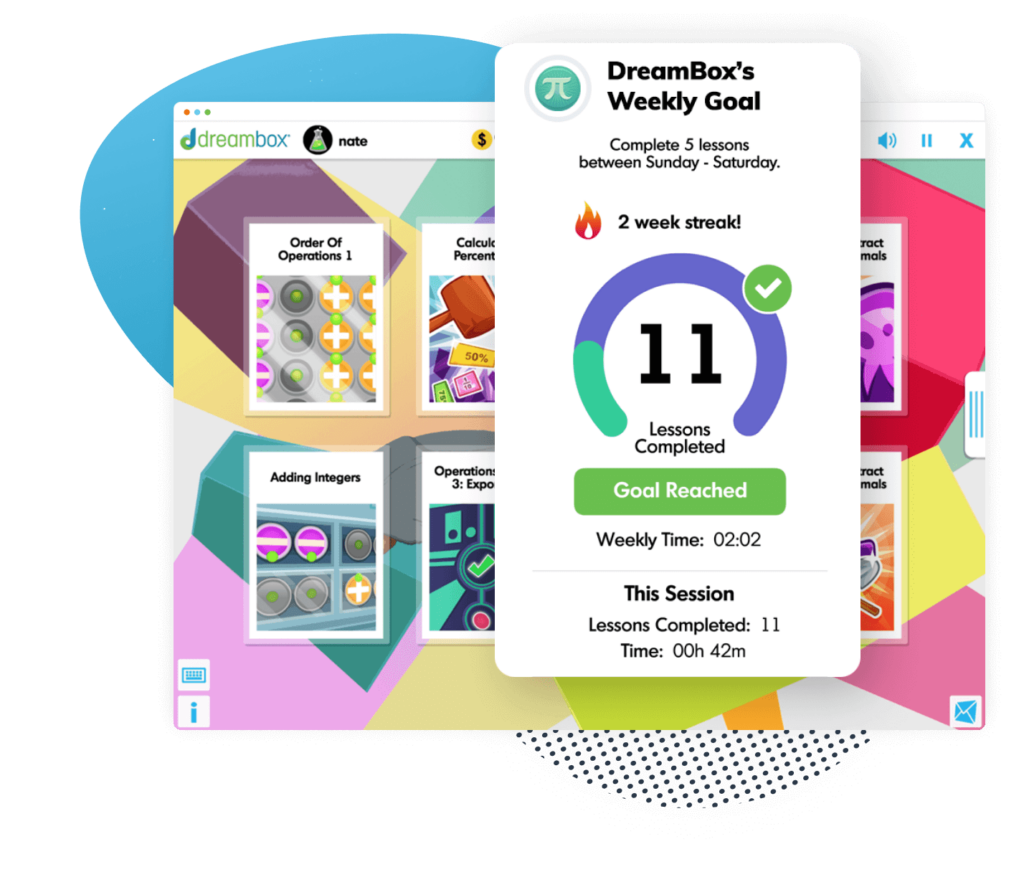
The math program that drives results
Get started today!
DreamBox adapts to your child’s level and learning needs, ensuring they are appropriately challenged and get confidence-building wins.
Converting AM PM Clocks to 24-Hour System
There are three rules to follow when converting 12-hour time to 24-hour time:
- The first hour of the day, 12:00 a.m. to 12:59 a.m., can be converted by subtracting 12 hours and removing the a.m. For instance, 12:35 a.m. would be written as 00:35.
- Times between 1:00 a.m. and 12:59 p.m. are the same on a 12-hour clock as they are on a 24-hour clock. Just remove the a.m. or p.m.
- For times between 1:00 p.m. and 11:59 p.m., add 12 hours and remove the a.m. or p.m. For instance, 1:18 p.m. becomes 13:18.
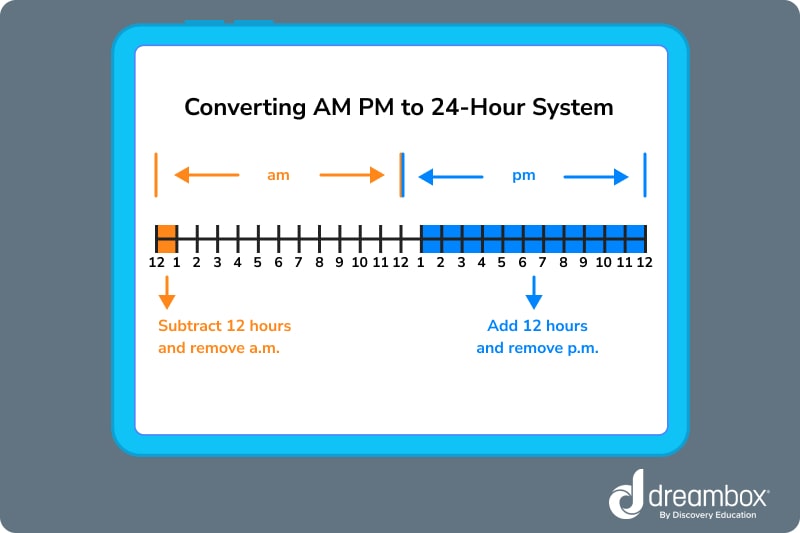
Converting Military Time to AM and PM
To convert 24-hour time to 12-hour time, just take the previous steps and do them backward!
- The first hour of the day, 00:00 to 00:59, can be converted by adding 12 hours and writing a.m. So, 00:48, for example, would be written as 12:48 a.m.
- Times between 1:00 and 11:59 are the same on a 12-hour clock. Just write a.m. at the end.
- Times between 12:00 and 12:59 also stay the same, but now, write p.m. at the end.
- For times between 13:00 and 23:59, subtract 12 hours and write p.m. at the end.
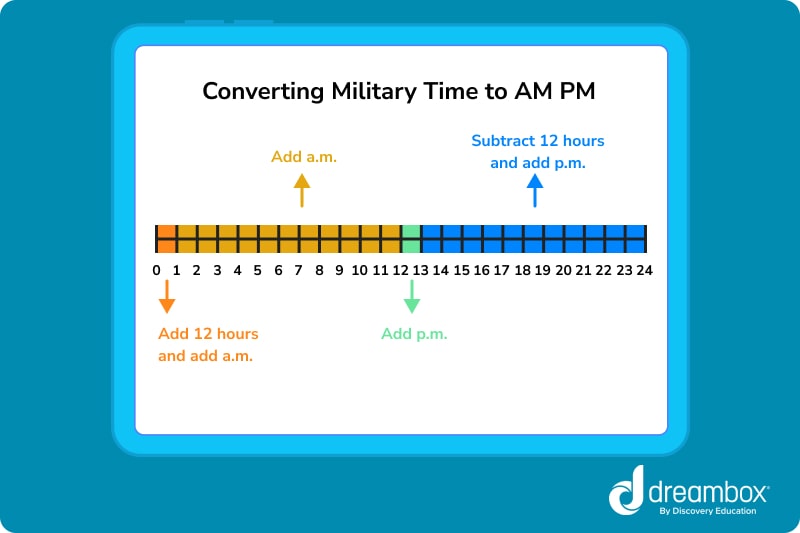
For more practice telling time, solve word problems or play time-reading games using a math app or website.
Practice Problems
Answer: 8:00
Answer: 3:00 p.m.
Answer: 2:00 p.m. according to 12-hour time, or 14:00 according to 24-hour time.
Parent Guide
- 1. Times between 1:00 a.m. and 12:59 p.m. are the same on both a 12-hour and 24-hour clock. You just have to remove the a.m. or p.m. So, 8:00 a.m. would be written as 8:00.
- 2. To convert times between 13:00 and 23:59 on a 24-hour clock to a 12-hour clock, you have to subtract 12 hours and write p.m. at the end. 15:00 – 12 hours is 3:00. Write p.m. at the end to get 3:00 p.m.
- 3. One and a half hours after 12:30 p.m. is 2:00 p.m. To convert that to 24-hour time, just add 12 hours and get rid of the p.m. 2:00 + 12 hours is 14:00.
FAQs about AM and PM
AM stands for ante meridiem, which is Latin for before midday.
PM stands for post meridiem, which is Latin for after midday.
Morning AM is used to refer to the first half of the day, from midnight to midday, which includes all of the morning hours.
12 A.M. is the first hour of the morning on a new day. 12 A.M. is also called midnight.
Morning is the time between sunrise and midday, or 12:00 PM.
The evening is usually considered to take place between 6:00 PM and 9:00 PM.
The afternoon takes place from noon to 6:00 p.m.
For the most part, North America, Australia, India, the Philippines, Columbia, Egypt, and Saudi Arabia use 12-hour time. Most other countries use 24-hour time.
AM and PM can be capitalized, but they do not have to be. It depends on the writing and editing style you are using.
Take at home math practice to the next level
Empowering parents and educators to make math practice more impactful. Plus, your kids will love it.


